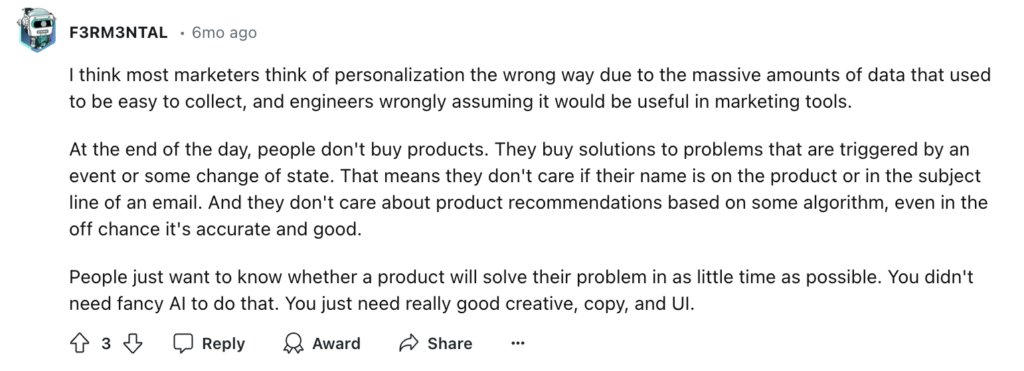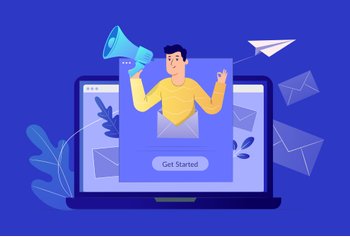Omnichannel Customer Experience Explained: Benefits, Tips and Examples

Table of contents
A week back, I had an early morning flight. To keep myself awake, I needed a cup of coffee. So while I was reaching the airport, I placed an order through the Starbucks app. And, after reaching the airport counter my coffee was handed over to me without a minute’s delay.
That’s the beauty of an omnichannel customer experience!
And this isn’t a new experience. Think about the ease with which you switch from your phone to a laptop to a smartwatch – while tracking the number of steps you’ve covered throughout your day. This is the essence of omnichannel customer experience—effortless transitions across platforms.
So, omnichannel customer experience is about creating a unified, cohesive experience for your customers, regardless of how they choose to interact with your brand.
In this article, we will explore the benefits of omnichannel customer experience, provide tips for implementing it, and provide inspiring real-world examples.
Table of Contents
- What Is Omnichannel Customer Experience?
- Difference Between Omnichannel and Multichannel Customer Experience
- Benefits of Omnichannel Customer Experience
- How to Implement Omnichannel Customer Experience in Your Business?
- Real-world Examples of Businesses That Deliver Great Omnichannel Customer Experiences
- Emerging Trends in Omnichannel Experiences
- Omnichannel Customer Experience Can Help You Gain Loyal Customers
- Frequently Asked Questions (FAQs)
What Is Omnichannel Customer Experience?
Omnichannel customer experience is the process of creating a seamless journey for your customers when they interact with your brand across different channels. It means that whether a customer reaches out through social media, email, a phone call, or even in person, their experience is consistent, connected, and personalized.
All the touchpoints are integrated, so the customer doesn’t feel like they’re starting over every time they switch channels.
For example, let’s say you run an online shoe shop. A customer browses a product on your app and adds it to their cart but doesn’t complete the purchase. Later, they visit your website from their laptop, and the product is still waiting for them in the cart.
Now, they decide to head to your physical store and mention the item to a sales rep, who already knows what they’re looking for based on their online activity. That’s omnichannel in action—no matter where the customer goes, their experience picks up right where it left off.
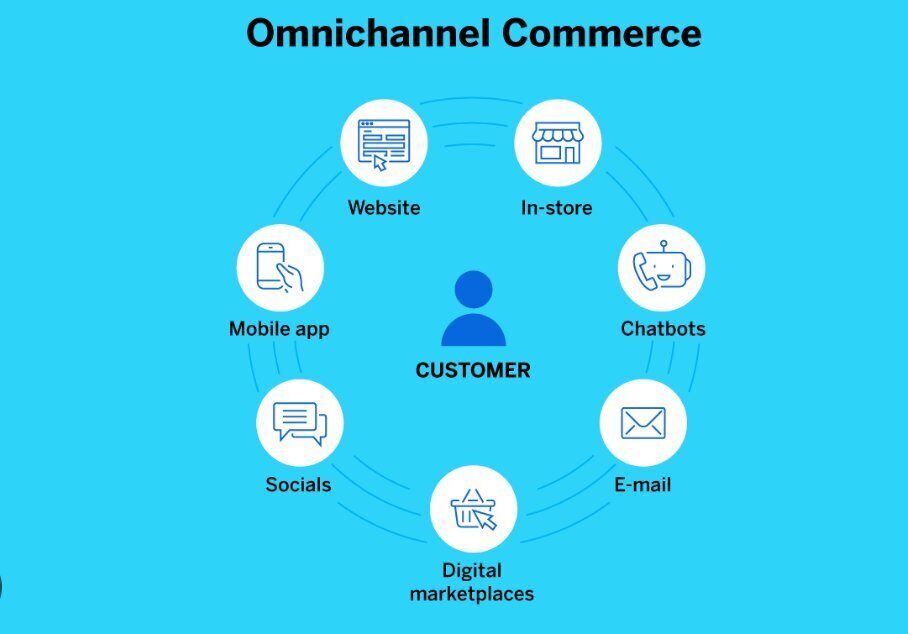
Difference Between Omnichannel and Multichannel Customer Experience
Many times, the terms multichannel and omnichannel customer experience are used interchangeably. But the truth is, these two are very different customer experience strategies. Both involve multiple communication platforms, but how they connect—or do not connect—is what sets them apart.
Here’s a quick breakdown of the differences:
| Aspect | Multichannel | Omnichannel |
|---|---|---|
| Integration | Channels operate independently of each other | All channels are interconnected and work seamlessly together |
| Customer experience | Separate experiences on each platform | Consistent, unified experience across all platforms |
| Data sharing | Customer data is isolated within each channel | Customer data is shared across all channels in real-time |
| Customer journey | May feel disconnected; customers start over on each channel | Feels continuous; customers can pick up where they left off |
| Focus | Channel-centric (focus on each platform’s performance) | Customer-centric (focus on the overall customer journey) |
Now that you understand the key differences, let me explain this with an example.
In a multichannel approach, a retail business might have a website, social media, and a physical store. While the business is present on all these platforms, the customer’s experience is not connected. For example, if a customer inquires about a product on Instagram, they may have to explain their inquiry again if they switch to email or visit the store.
On the other hand, with an omnichannel strategy, everything is connected. A customer could browse a product online, receive personalized emails with offers based on that browsing history, and then visit the physical store, where the sales staff already knows what the customer has been looking at online.
Recommended read: Multichannel Vs. Omnichannel Support
Benefits of Omnichannel Customer Experience
Here’s how providing a consistent customer experience across multiple touchpoints helps your business:
- More customer satisfaction: When customers can switch between channels without having to repeat themselves, it leads to a more satisfying experience.
- Better customer retention: A seamless omnichannel experience builds trust and loyalty. When customers feel understood and valued across all interactions, they’re more likely to stick with your brand.
- Higher sales and conversion rates: An integrated experience makes it easier for customers to complete their purchase journey. Whether they add an item to their cart via the app and purchase it in-store or browse online and get a personalized follow-up email, the streamlined process leads to fewer abandoned carts and more sales.
How to Implement Omnichannel Customer Experience in Your Business?
Like I mentioned before, the omnichannel customer experience is about creating a smooth and consistent experience for your users. The idea is to make every interaction a continuation of the previous one.
Here are a couple of actionable strategies to help you implement an omnichannel customer experience:
1. Centralize your customer data
You need to get a complete view of customer activities across all channels. This way, you’ll be able to give your customers a better and consistent experience. To do this, you need to break down data silos and consolidate information into a single hub.
To centralize your customer data, Customer Data Platforms (CDP) like Segment or CRM software like Salesforce can help. These tools collect data from every touch point like website, app, or social media and store them in a unified platform where you can have a real-time view of your customer conversations.
It is important to note that when you’re offering customer service, tools like Hiver can help. It is a customer service platform that centralizes all customer conversations across different channels within your inbox. You don’t have to migrate to a different platform or software. Instead, unify all your customer data within your inbox.

It also gives you an overview of your customer’s profile. This can be quite useful to create personalized experiences for your customers.

For example, if you receive an inquiry from a customer, and the profile says that this customer frequently reaches out to the support, you can personalize the communication, to make them feel valued, or mark their query as a priority.
2. Map your customer journey
For a consistent experience, you need to first identify all the touch points in your customer journey. Only then will you be able to connect the first touchpoint to the last to provide a seamless omnichannel customer experience.
Here’s how to do it:
- Start by identifying the ways a customer interacts with your business—whether it’s browsing online, receiving emails, or making an in-store purchase
- Create a visual map of their journey and ensure each channel transition feels natural. For instance, if a customer starts chatting online and later calls your support team, the representative should have access to the chat history.
Here’s an example of a visual map of a potential customer planning to buy a new car. It maps out all the relevant channels that a customer can use to interact with the car company before making the final purchase.
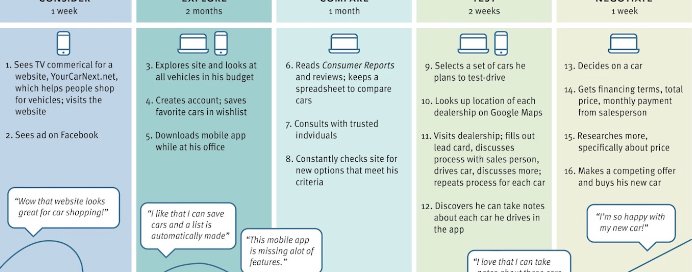
3. Personalize your customer experiences
Personalization helps you build strong relationships with your customers. It shows that you really care for your customers’ needs and preferences.
So, how do you do this?
- Once you have unified all your customer data, you can segment your audience into different groups based on their preferences and needs.
- Use these segmentations to send personalized recommendations, offers and content.
- For instance, if a customer adds items to their online cart but doesn’t check out, send them a friendly reminder with a discount or suggest related products. The key is to ensure personalization is consistent across all channels.
Speaking of personalization, here’s an interesting view from a user that I found on Reddit. Marketers today often try to hyper-personalize their customers’ experiences. This can be in the form of engraving customer’s name on their product or sending them a hand-written note.
Although these are useful strategies, it is important to remember that your marketing strategy should solve a customer’s problem. Only then you’ll be able to create memorable customer experiences.
So the next time you come up with a personalization strategy, ask yourself what problem are you trying to solve for your customer.

4. Train your team on your omnichannel strategy
It is true that collecting and unifying data with the help of technology can help you create a consistent experience for your customers. However, a lot depends on your workforce as well. They should be well-aligned and informed about all the strategies you use to win your customers.
How to train your employees?
- Ensure all the departments – from sales and marketing to customer support- are on the same page regarding your omnichannel strategy. Conduct brainstorming sessions where all your teams can pitch in unique ideas and solutions.
- Provide training on how to use integrated tools and share customer data across teams. This ensures that every employee can deliver a consistent experience. For example, a sales rep should have access to the same customer data as the marketing team. This ensures that they know about your customer’s profile before starting a conversation.
Recommended read: The Ultimate Customer Service Hiring and Training Handbook
5. Utilize automation to boost efficiency
With automation, you can take care of repetitive and mundane tasks and also maintain consistency across channels. For instance, setting up an automated thank you message can ensure customers receive timely responses, even when you’re juggling interactions on several platforms.
One way to leverage automation is the use of chatbots or AI in your communication channels. If a customer reaches out to you with a straightforward question, the chatbot can pull in data from your knowledge base and provide an answer. This can be done without any human intervention.
Similarly, with Hiver, you can also set up conditional rules to automatically assign customer queries to your support agents in a round-robin manner. This way, agents can pick up the query right away without waiting for their supervisor to assign it to them.
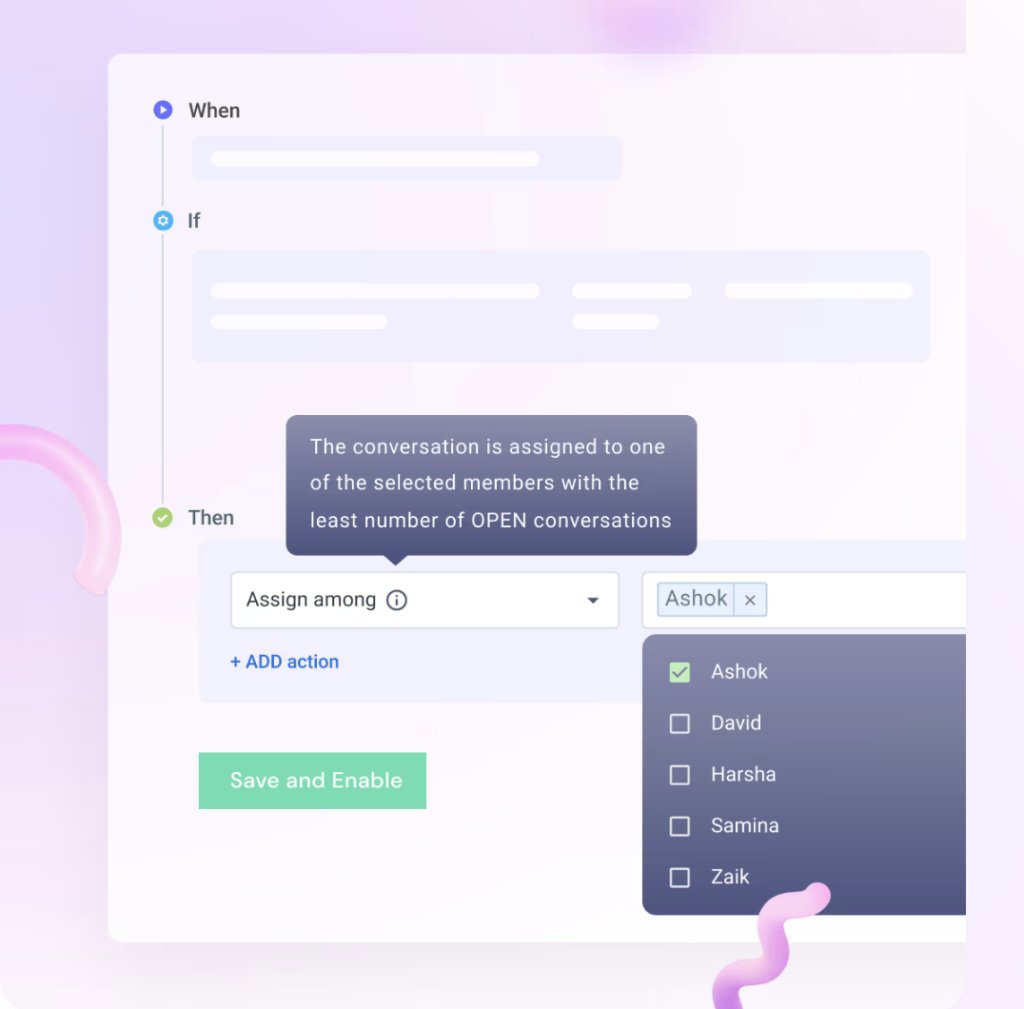
6. Analyze and improve
Setting up your omnichannel customer experience isn’t a one-time thing. You need to continuously measure the performance of techniques and make finer adjustments based insights into customer behavior.
For this, use an analytics tool like Google Analytics or Amplitude to track how customers move across different channels, where they drop off, and how satisfied they are with their experience. Based on this data, tweak your approach to improve weak spots or friction points.
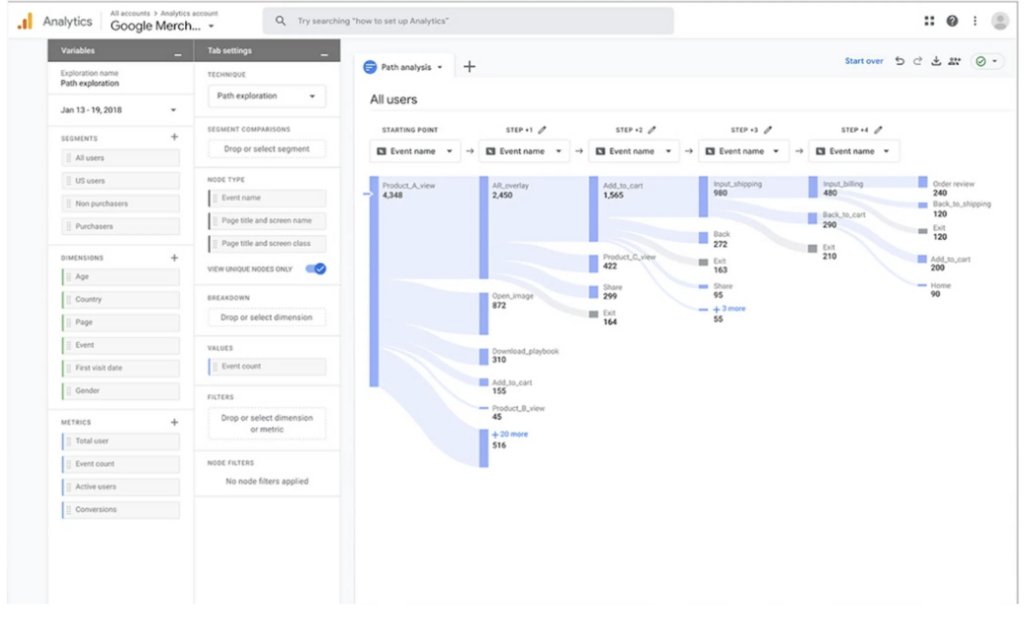
Real-world Examples of Businesses That Deliver Great Omnichannel Customer Experiences
Here are 3 case studies of businesses that have mastered omnichannel customer experiences. Let’s examine them and find out what makes them stand out.
1. Starbucks
Starbuck’s seamless cross platform experience is one of my personal favorites. Their mobile app has a very user friendly UI and helps create a unified customer journey across all platforms. You can pre-order, pay and collect reward points through the app.

Its Integration with the online app and offline store is great.
For example, a customer can buy a coffee with their card or loyalty points through the app and can choose to get it delivered or picked up from any store without any hassle. You earn loyalty points for every purchase you make. The app seamlessly syncs all of this data, ensuring that each interaction is part of one cohesive experience.
Takeaway:
Starbucks focuses on convenience, personalization and consistency across all platforms. This helps them gain loyal customers who enjoy the uninterrupted experience, no matter what channel they choose to interact with Starbucks.
2. Sephora
Sephora has built one of the most effective omnichannel strategies in the retail industry. Their Beauty Insider loyalty program keeps all interactions in one place – whether the customer shops in-store, on their website, or via their app.
For instance, if a customer uses Sephora’s app to browse products, they get product recommendations based on their purchase history and past behaviors. When they visit a physical Sephora store, associates pull up this same data to provide recommendations based on their skin concerns and browsing activity.
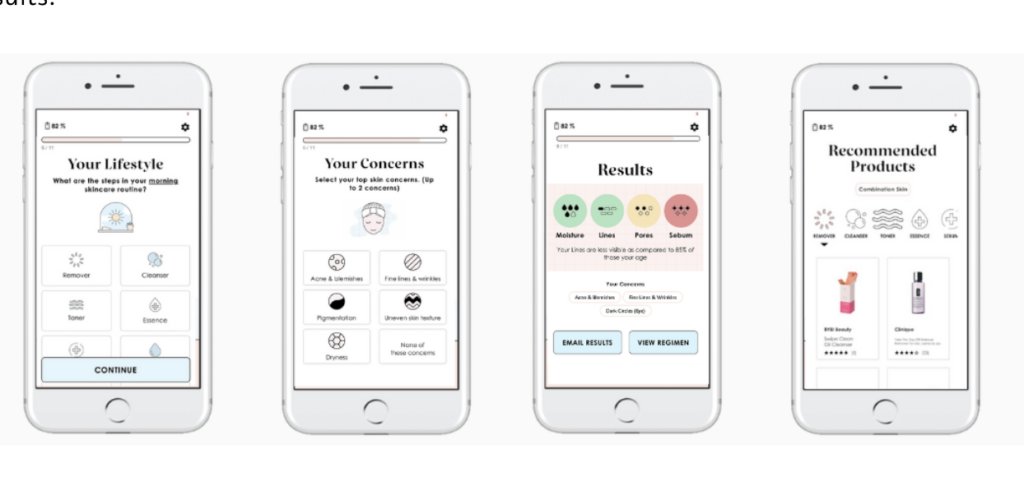
Sephora also sends in-app notification reminders for customers who browse products but don’t make a purchase. They also send reminder emails with the option to add the product to the customer’s cart. This level of personalization and integration encourages customers to continue engaging with the brand on any channel.
Takeaway:
Sephora’s ability to offer personalized recommendations based on both in-store and digital behavior creates a smooth and engaging customer journey.
3. Nike
Nike is another great example of a company that specializes in delivering omnichannel experiences. You can add your data like your shoe size, the design you prefer and more to customize your shoes according to your liking through the app, website, and physical stores. This data is stored to give you personalized recommendations every time you visit the app or website.
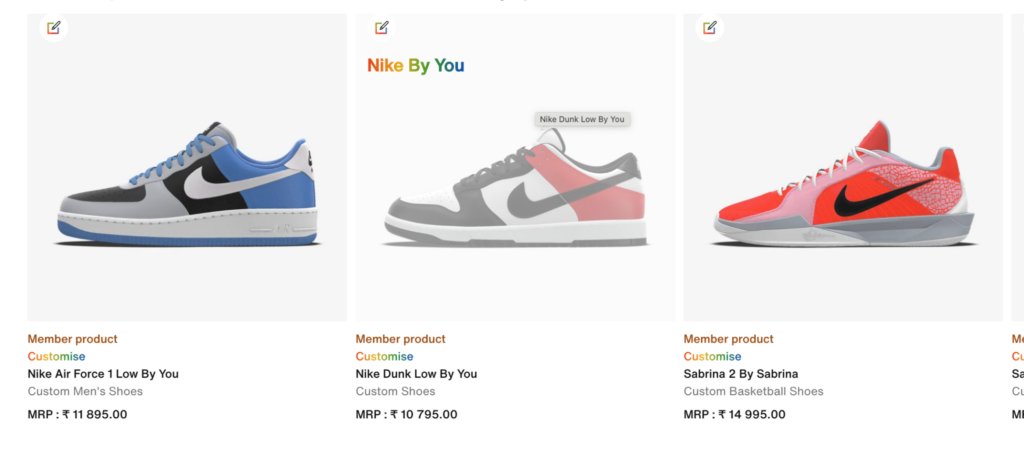
The app also uses customers’ geolocation to enhance the in-store experience. When customers visit a store, they can check product availability, locate items, and even request assistance—all through the app.
Takeaway:
Nike’s seamless combination of online and in-store experiences, backed by personalized product recommendations, makes shopping convenient and fun.
Emerging Trends in Omnichannel Experiences
With the advancement of technology, there is a slow shift towards more integrated and personalized customer experiences. These innovations, when used in the right method, can can take your omnichannel customer experience a step further.
Let’s take a look at some of the interesting innovations:
1. AI-powered personalization
Artificial intelligence is the talk of the town. AI has indeed helped us improve our productivity and now, businesses are leveraging it to analyze customer data and deliver personal recommendations.
For instance, Netflix and Spotify use AI to provide movie or song recommendations based on our browsing history.
However, one thing to note is that to leverage AI to the fullest extent, it should be continuously trained with more information and tested for performance. Otherwise, it can create bad customer experiences, which can ultimately affect your business’s relationship with its customers.
Here’s how a Reddit user explains the flaws of Meta AI in recommending products to him despite using Google for years.
2. Voice assistants and smart devices
The integration of voice assistants like Alexa, Google Assistant, and Siri into customer experiences is another growing trend.
Customers can now shop, ask questions, or troubleshoot products using voice commands, adding a new layer of convenience to the omnichannel experience.
Also, smart devices like wearables and IoT-enabled home appliances are becoming a part of the omnichannel journey.
3. Augmented Reality (AR) and Virtual Reality (VR)
AR and VR are changing how customers interact with products, especially in the retail, real estate, and automotive industries. These technologies provide immersive experiences, allowing customers to virtually “try on” clothes, visualize furniture in their homes, or even test-drive cars—all from the comfort of their homes.
For example, IKEA’s AR app lets you visualize how furniture would look in your home before making a purchase. This blends the physical and digital shopping experience.
Omnichannel Customer Experience Can Help You Gain Loyal Customers
Building an omnichannel customer experience is a game-changer that can help you build lasting relationships with your customers. Provide them with seamless, personalized, and connected experiences across all channels, and you’ll build more loyal customers who who provide long-term value for your business.
When customers know they can rely on your brand, no matter where or how they interact, they’re much more likely to stick around.
If you are looking to deliver omnichannel customer support to your customers, tools like Hiver can be a good choice. It streamlines customer service across channels like email, chat, and social media and unifies all customer data in one place.
The best part is that Hiver integrates seamlessly with your Inbox, so you do not have to learn a new tool!
Start a free trial to explore the features.
Frequently Asked Questions (FAQs)
- What is an omnichannel customer experience?
An omnichannel customer experience ensures that customers have a seamless and connected journey across all platforms—whether they’re interacting with your brand online, through social media, in-store, or via phone. It’s about making sure their experience is consistent across all platforms
- How is omnichannel different from multichannel?
The main difference is integration. In a multichannel approach, each platform (like social media, website, and in-store) operates separately. In contrast, an omnichannel strategy connects all customer touchpoints, allowing for a unified and continuous experience so that customers can easily switch between channels without starting over. - Why is omnichannel important for businesses?
Omnichannel strategies help businesses provide a smoother, more personalized experience, which leads to increased customer satisfaction, loyalty, and sales. - How can small businesses implement an omnichannel strategy?
Even if you don’t have a sizable budget, small businesses can start with simple steps like integrating customer data from different touchpoints (social media, email, etc.) and using affordable CRM tools to keep track of customer interactions. Building a consistent experience across these channels can be done gradually as you grow.
- How can I measure the success of my omnichannel strategy?
Key metrics include customer satisfaction (measured through surveys or feedback),customer retention rates, sales growth across channels, and how efficiently customers move through their purchasing journey. Tracking engagement on each platform can also provide insights into what’s working and where improvements are needed.











